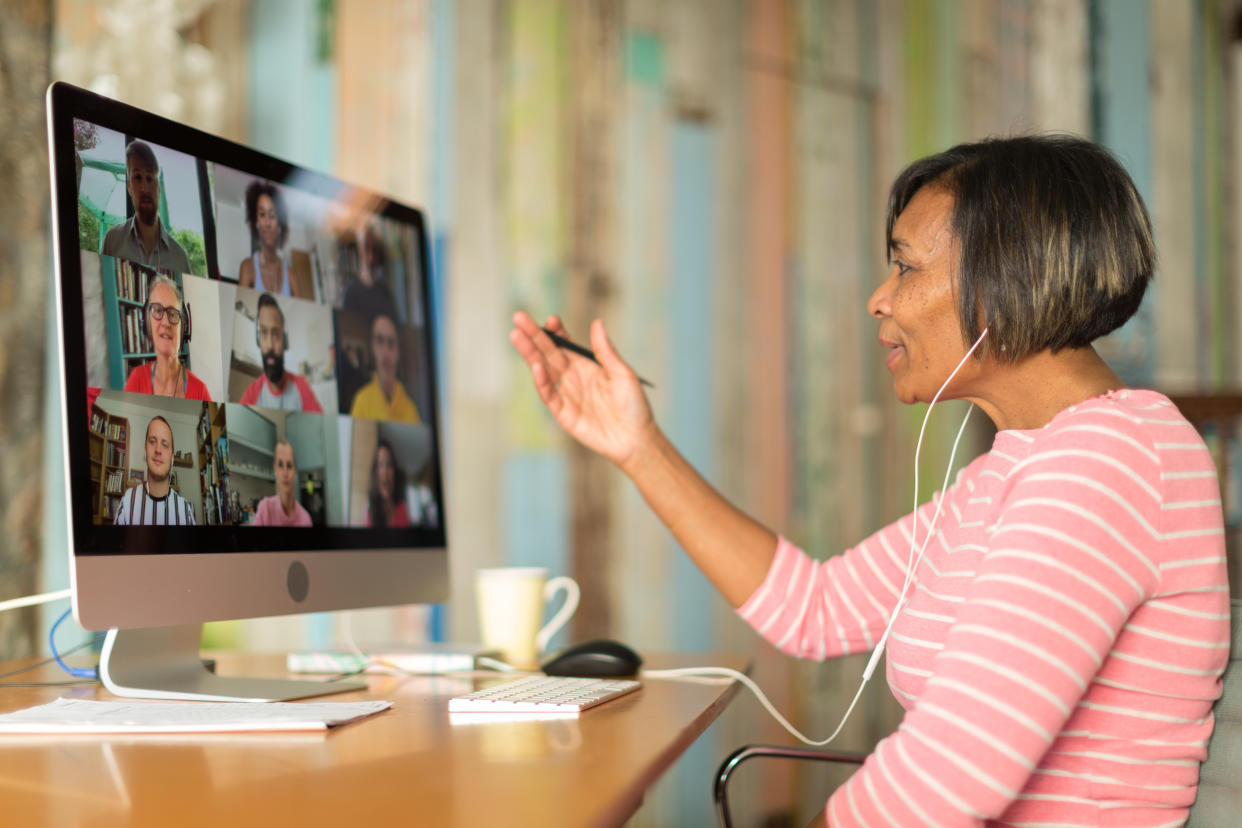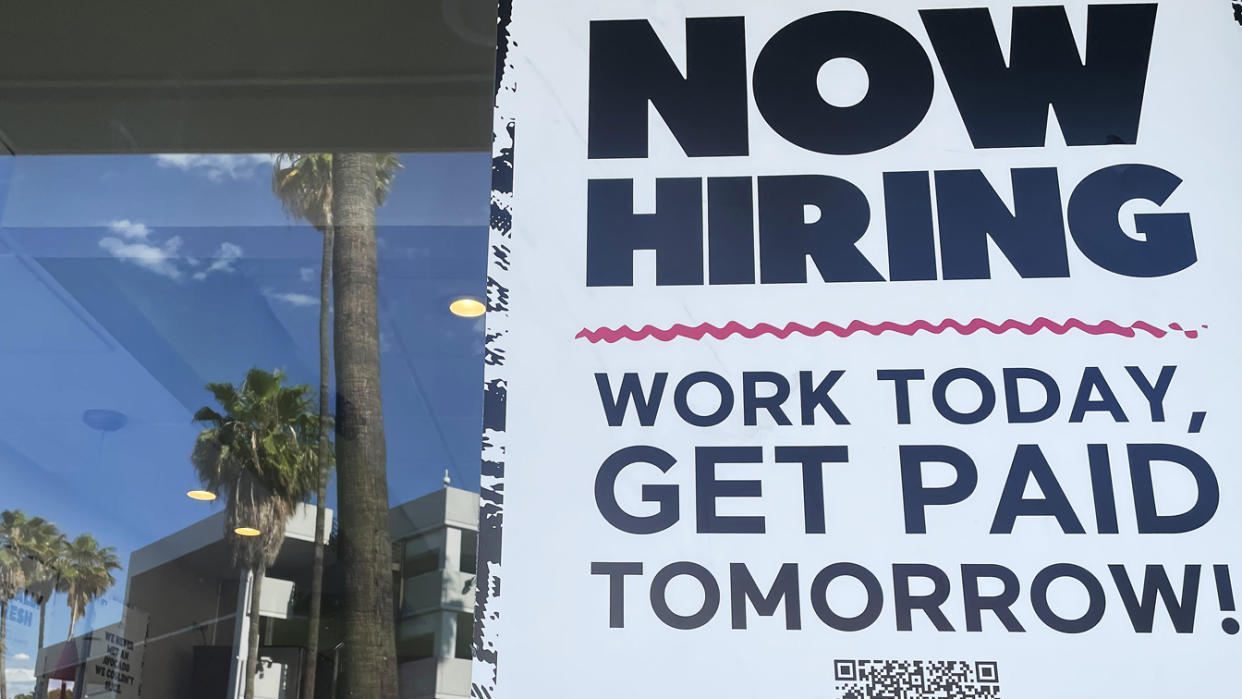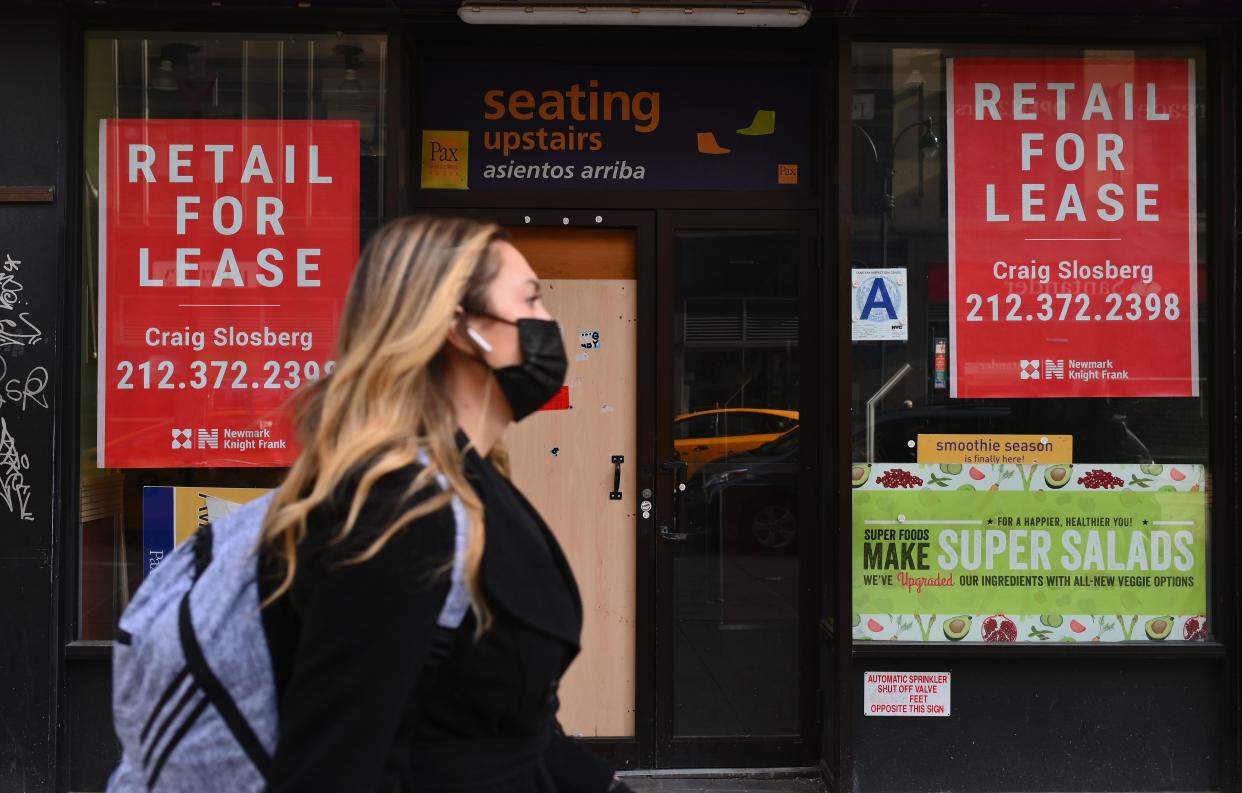The coming culture war over returning to the office
WASHINGTON — “It felt so fresh. Everything was big to me again,” a Chicago-area woman named Amaiya Lockwood recently told the Washington Post. She wasn’t talking about finding true love, or a transcendent religious experience. Lockwood was thrilled at going to work in an office building.
Office workers are returning to office buildings across the nation, with millions more slated to do so in September. Federal agencies are supposed to have return-to-office plans ready by mid-July. But while some are as excited as Lockwood, others dread the moment they have to pack into commuter trains again or face the prospect of a sad desk lunch. “Employees Are Quitting Instead of Giving Up Working From Home,” read the headline of a recent Bloomberg article.

The pandemic has been a culture war from the very start: over lockdowns, masks, schools, vaccines. It shouldn’t be surprising that it will be ushered out with an entirely new culture war, one centered on the cubicles and desks many workers left in March 2020, thinking the pandemic would be over in a week or two. Sixteen months later, many haven’t been back since.
So much has changed about American work since then. Millions have moved from larger cities to smaller ones. People spent more time with their kids (though not always by choice). They suddenly had time to garden, exercise. Business travel was no more, which meant that airport hotels and awkward client dinners were also no more.
It’s little wonder that 75 percent of people surveyed in a recent USA Today poll said they wanted to work from home either some or all of the time. “If employees said we want to go back five days a week, we wouldn’t be having this conversation,” says Susan Lund, a McKinsey partner who recently authored a report on the future of work.
At the same time, people are tired of Zoom meetings and the isolation of sitting in their own house or apartment day in and day out without a respite. Some people enjoy their commutes, which have a psychological benefit, buffering the workday from home life. A recent article in the Harvard Business Review found that remote work is causing an “erosion of trust in each other.” Many people are vaccinated, and many children are going to camp for the first time in two years. With the pandemic receding, so are reasons to keep staying inside.

Which helps to explain the findings of another poll, this one conducted by SurveyMonkey in February, which reveals that twice as many people (36 percent) want to always work from the office than want to always work from home (18 percent).
“The novelty of working from the comfort of our own homes has officially worn off,” writes human resources executive Susan Tohyama.
Given these drastically differing opinions, Americans can expect “masses of turbulence,” says Nicholas Bloom, a Stanford economist who writes about the future of work.
There has been plenty of turbulence already. Back in March, Amazon told workers to prepare for “return to an office-centric culture.” But the comments triggered a backlash among employees, and Amazon effectively admitted defeat earlier this month, tweaking its guidance to allow for two remote workdays per week.
“It’s going to take a year for this thing to settle down,” Bloom predicts. He believes most corporations will eventually adapt a hybrid model similar to Amazon’s. “The large majority of people want to work from home one-plus days a week,” he says. But culture clashes are usually driven by passionate extremes, not the reasonable middle. And the passions around remote work are nearly as high as the passions around remote school.
RTO (return to office) vs. WFH (work from home) “is going to be the next big cultural war,” agrees Andrew Beaujon, a senior editor at Washingtonian magazine who recently found himself in the middle of this very conflict.
One Thursday evening in early May, Beaujon says, his phone started going off, with what he calls “a lot of WTFs.” The outrage was directed at a WFH column published in the Washington Post.

“As a CEO, I worry about the erosion of office culture with more remote work,” the headline of that op-ed said. The original headline of the piece was even more blunt: “As a CEO, I want my employees to understand the risks of not returning to work in the office.”
The author was Cathy Merrill, owner of the Washingtonian and disburser of Beaujon’s paychecks.
"Nobody knew that her op-ed was coming,” Beaujon said. “I just couldn’t believe it. Nobody could.”
Merrill concluded her column with what Beaujon saw as a threat to him and to his Washingtonian colleagues: “The biggest benefit for workers may be simple job security. Remember something every manager knows: The hardest people to let go are the ones you know.”
Beaujon says that Merrill eventually apologized. But she is hardly the only executive to have voiced similar opinions — with similar blowback. Just days later, WeWork’s chief executive, Sandeep Mathrani, had to apologize for saying that employees “who are least engaged are very comfortable working from home.”
Once bullish on returning to the office, the investment giant Goldman Sachs has turned bearish. Its employees, too, can work from home some of the time. But what if some of those employees decide they want to work from home all of the time? What if they moved to the Hudson Valley — or farther, to Colorado or the Caribbean — and have no interest in commuting to Manhattan ever again? And what if neither the pay nor the prestige of Goldman can entice them back to 200 West Street?
“There is a labor shortage in a lot of professions” involving knowledge work, says Anita Lettink, a Dutch corporate consultant who writes about the future of work. “And so, if you don’t make accommodations for these people, but your competitor does, they’re gone.”

There are cultural considerations, too. A 2017 analysis by Fortune found that 72 percent of the executives in the nation’s largest companies were white men. Richard Cooke, who wrote about remote work for the New Republic, recently mused that the people who disliked remote work most were “white male bosses” who missed daily “dominance performances” over underlings cowering in barren cubicles. At the very least, many executives climbed the corporate ranks by thriving in office life, and returning to the pre-pandemic status quo makes sense, whereas living on Slack and Zoom does not.
Some chief executives have seemingly embraced the return to the office as a symbol of both civic duty and corporate machismo. “If you can go into a restaurant in New York City, you can come into the office,” Morgan Stanley chief executive James Gorman said earlier this month.
Not everybody can eat at a New York restaurant, at least the kind of restaurant Gorman (estimated net worth: $148 million) probably has in mind. Some advocates of work from home have accordingly framed the issue in terms of racial justice and equity. “When geographical barriers are removed, location bias and relocation costs can be eliminated,” argued the content strategist Samantha McLaren in a blog post for LinkedIn. After all, if you force people to be in San Francisco, you will hire only people who can afford to live in San Francisco in the first place.
In a leaked letter opposing returning to the office, Apple employees argued that remote work would help Apple meet goals of “diversity and inclusion.” Elsewhere, too, the letter invoked the social justice movement: “inclusivity,” “well-being,” “empowered,” “unheard,” “invalidating,” “lived experiences.”

Productivity appeared to rise during the national work-from-home experiment that was most of 2020 and some of 2021, rightly leading to questions about what offices are good for in the first place. “People talk about office culture, but what the hell is that? Nobody can tell you what that is, because it doesn’t really exist,” Beaujon of the Washingtonian says.
A 2019 study suggests he is right. Staring at their screens, ears covered by noise-canceling headphones, many office workers rarely burst into the kind of spontaneous collaboration envisioned by corporate visionaries of yesteryear.
If that’s the case, why come into the office at all, if you need nothing more than an internet connection? “Jobs are really a construct of the industrial age,” Lettink, the Dutch consultant, explains. “We needed people in the factories as long as we could.” Work has become a lot more “project-based,” she told Yahoo News. Results matter; how long it takes to achieve them doesn’t.
“Just telling people to come back to the office from 9 to 5 doesn’t make any sense,” Lettink told Yahoo News from her home office near Amsterdam, from which she has been working since long before the pandemic began.
“The culture war is based on how we work, not where we work,” explains Charlie Warzel, the former New York Times technology columnist who now publishes a Substack newsletter called Galaxy Brain. Young people “don’t want to live to work,” he says. Studies have found that they seek experiences, not things.

Only it’s not quite that clear-cut. Home workers tend to work longer hours than their office-bound counterparts, which seems to defeat the very purpose of remote work in the first place. And there are concerns that people who continue to show up to work will be more noticed, and thus more readily promoted.
Warzel had been working from home for three years when the pandemic began in 2020. He was clearly skeptical, revealing his distaste for the practice just as others were embracing it. “I simply don’t trust corporations to preside over the switch without forcing employees to sacrifice, in the name of productivity, what little work-life balance they have left,” he wrote for the Times in Maylast year.
There was a brief return to offices in June 2020, but then the second wave of the pandemic hit, and offices closed once again in much of the country. The following school year started with some 60 percent of American children learning from home. If those children were in elementary or middle school, they almost certainly needed supervision. That fact alone made remote work a necessity for white-collar workers in densely populated areas like the Bay Area and northern Virginia, where schools remained remote for much of the year.
As of May of this year, 72 percent of office workers were still working from home, even as vaccination numbers climbed and infection rates fell. Downtowns desperate for workday crowds remained as barren as Siberia in December. In March, the local publication DCist found that 375 businesses in Washington, D.C., had closed.

New York Post real estate columnist Steve Cuozzo, a longtime observer of Manhattan culture, argues that New York “won’t truly be back until employees return to their offices.” He warned that “short of a mass return to offices, the city faces a catastrophic loss of tax revenue and permanent closures of stores, restaurants, hotels and service businesses.”
New York City Mayor Bill de Blasio had been coaxing city employees back into the office for seemingly that very reason. His counterparts in the federal government are taking a more cautious approach. A June 10 guidance from the Office of Management and Budget gives federal agencies until mid-July to formulate return-to-office plans. And those plans must include “maximum telework flexibilities,” meaning that some federal employees could be working from home well into 2022.
Bloom, the Stanford economist, says that commercial rents in places like Manhattan could use a downward correction. National chains may leave, but that could bring back the very kind of small, homegrown businesses that Starbucks and Citibank branches drove out. “No building is going to stay empty,” he says in a rejoinder to Cuozzo. “Not in the long run.”
Still, people have been moving out of large cities like New York and San Francisco. Some may return, but many won’t. “The pandemic has devastated a lot of what made cities attractive in the first place,” says Chapman University urbanist Joel Kotkin. Capacity restrictions, temperature checks, timed-entry tickets and Plexiglas screens all put a damper on the bustling spontaneity of a city like New York.
Packing into a bar with strangers used to be part of the thrill; now doing so comes with worries about vaccination rates and coronavirus variants.
“Will cities become ghost towns? The answer is no,” says future-of-work expert Eddy Ng, who runs a management center at Queen’s University in Ontario. “Young people are still trying to get into the city.”
It was employees of corporations like Goldman Sachs and Apple who have been driving up residential prices in recent years. Their absence could allow for the kind of diversity that $4,000 a month for a studio apartment tended to foreclose.
Still, the images of empty downtowns and shuttered businesses are hard to countenance, even if the situation is neither permanent nor quite as dire as those images suggest.

Republicans see a political opening, much as they did when Democrats seemed to balk at reopening schools. In a May 18 letter to the acting director of the Office of Personnel Management, Rep. Jody Hice, R-Ga., argued, “It is time to begin transitioning to the workplace,” in particular for federal employees who work in customer-facing settings, such as welfare offices.
And at a House hearing held over video link in June, Rep. Donald Payne, D-N.J., appeared to be wearing just his boxers and a Captain America T-shirt. “Another reason Democrats should get off Zoom and back to work,” tweeted Rep. Beth Van Duyne, R-Texas, with a clip of her Democratic colleague.
Caught in between are ordinary Americans who simply want some clarity about how, and where, they will work. Will they still be able to drive their children to swim practice, as they have been doing for the last several months? Will there still be time for that mid-afternoon, head-clearing bike ride?
“It’s going to be a time of experimentation,” says Lund, the McKinsey partner. She believes that such experimentation will last into 2022. Beaujon, the Washingtonian editor, is more blunt. “It’s never going to go back to the way it was,” he told Yahoo News on a weekday afternoon that found him working from his backyard.
____
Read more from Yahoo News:


